52 Hemiptera – Auchenorrhyncha
Auchenorrhyncha
The suborder Auchenorrhyncha was previously part of the suborder (and prior to that a completely separate order from Hemiptera!) Homoptera (“homo” = “same”). Both the Auchenorrhyncha and the third suborder, the Sternorrhyncha, have membranous forewings. Their mouthparts are also attached towards the back of the head (they are opisthognathous) so that the proboscis is held between the forelegs, and can be difficult to see in some specimens. Auchenorrhyncha (“auchenn” = “throat” or “neck”, and “rhynch” = “snout”) includes the cicadas and various forms of planthoppers.
D.2.1 Cicadidae
Cicadidae are fairly large insects with long life cycles. Most of their lives are spent as nymphs underground, feeding on plant tissues. Some eastern species have 13- to 17-year life cycles, only emerging as adults for a few weeks during that period. To maximize reproductive success, these multi-year life cycles are tightly synchronized so that all individuals of one species emerge within the same year, and within a couple of weeks. Adult cicadas stridulate to attract mates, and their shrill buzzing sounds can be heard on hot summer days around Prince George. Eggs are laid in small notches cut in twigs, and these can be problematic during large emergences.
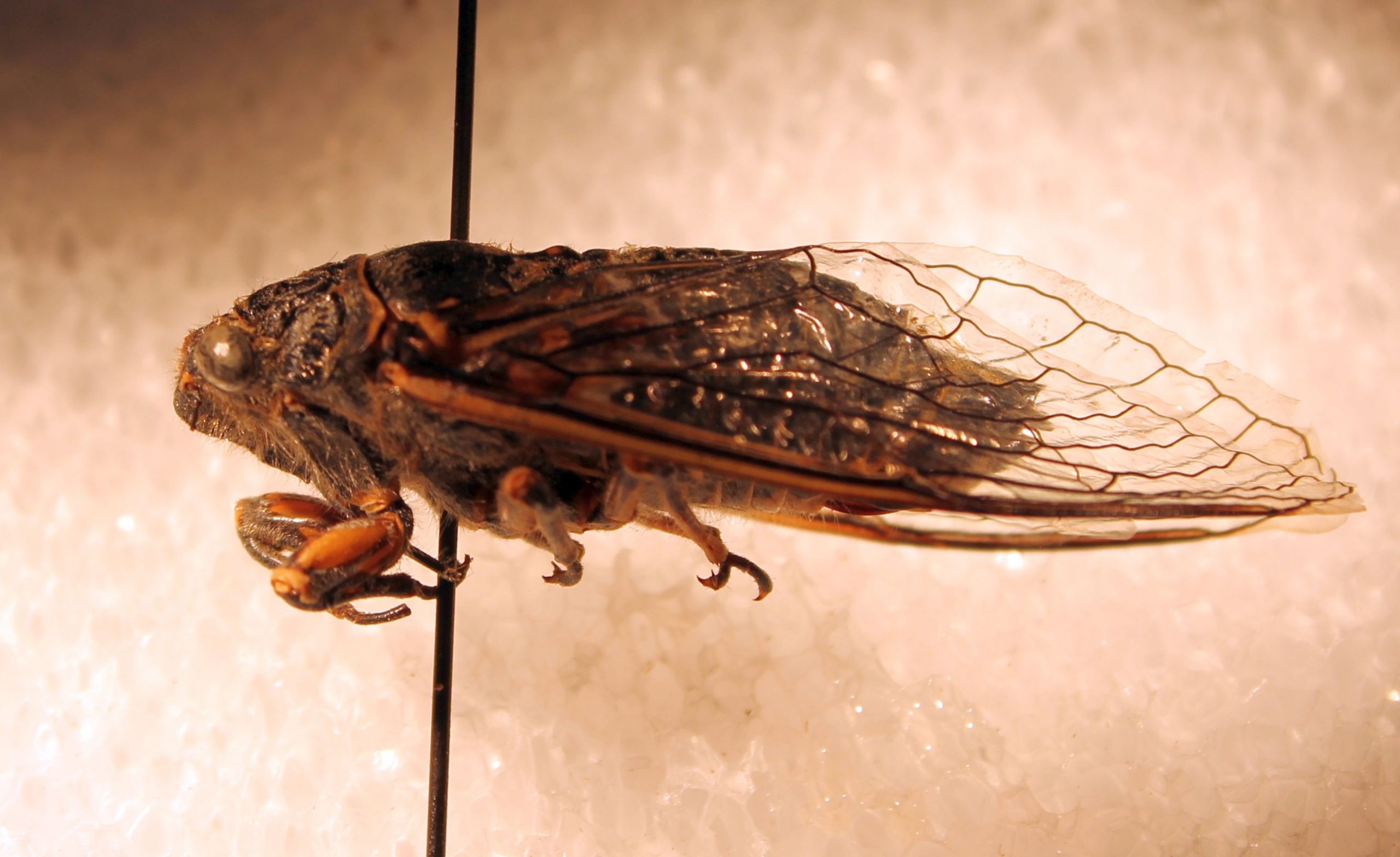
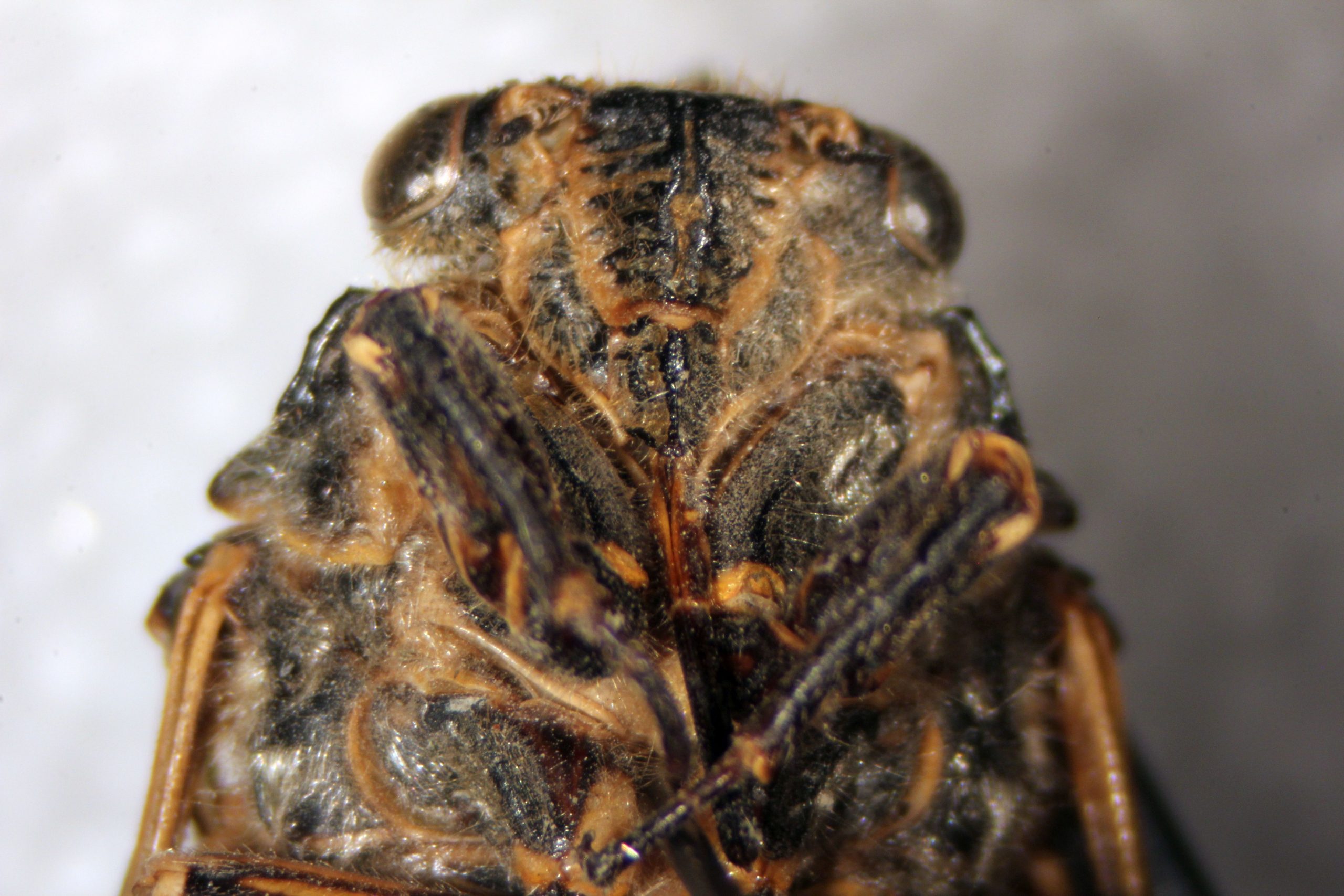
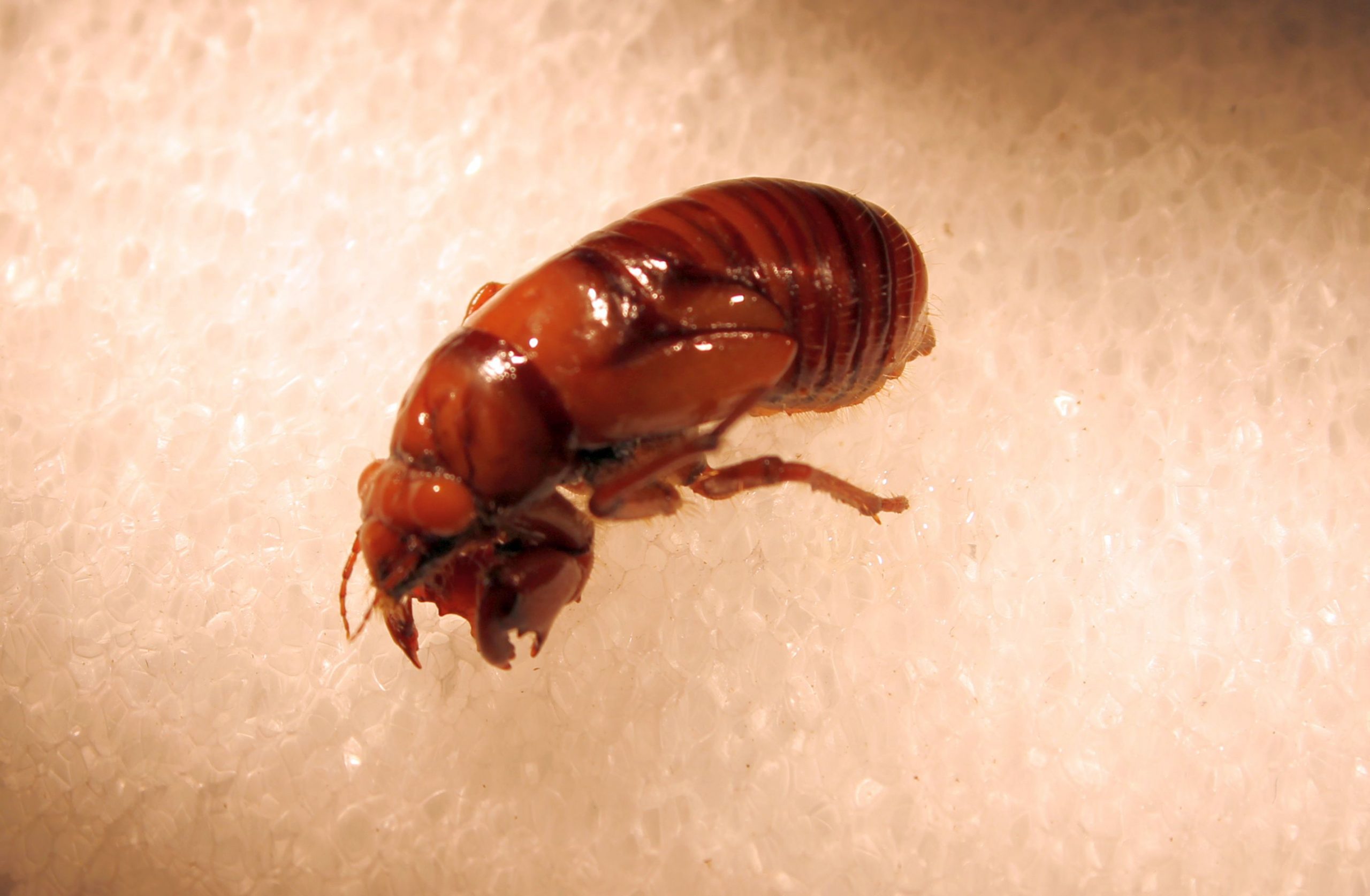
Membracidae
Membracidae, or treehoppers, have an impressive diversity of pronotal shapes and ornamentation, evolved to make them look more like the woody plants on which they feed. These are rarely collected by students, probably because they are so cryptic.

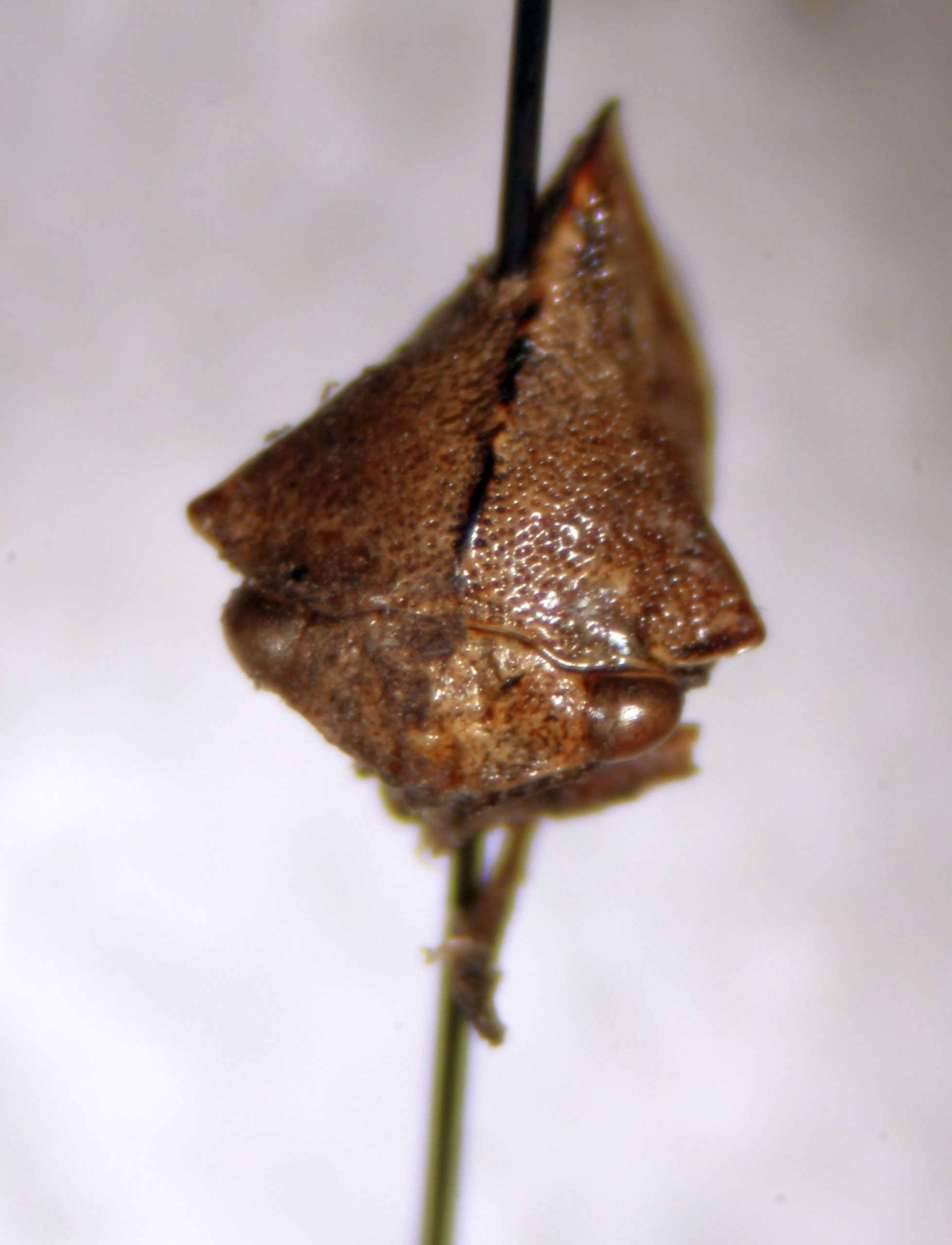
Cercopidae
The spittle bugs, Cercopidae, are responsible for the frothy “frog spit” often encountered in long grass and on other vegetation in the summer. The nymphs use the froth as a protective covering while they feed on the plants. These are common in Prince George, and resemble miniature cicadas in body shape. They closely resemble the next family, Cicadellidae. Cercopidae tend to have stouter bodies and very short, bristle-like antennae compared to Cicadellidae. The definitive characteristic is the bristles/spines on the hind tarsi: Cercopidae have a ring of stout spines at the distal ends of the hind tibiae and each hind tarsal segment. There may also be one or two stout spines elsewhere on the hind tibiae.

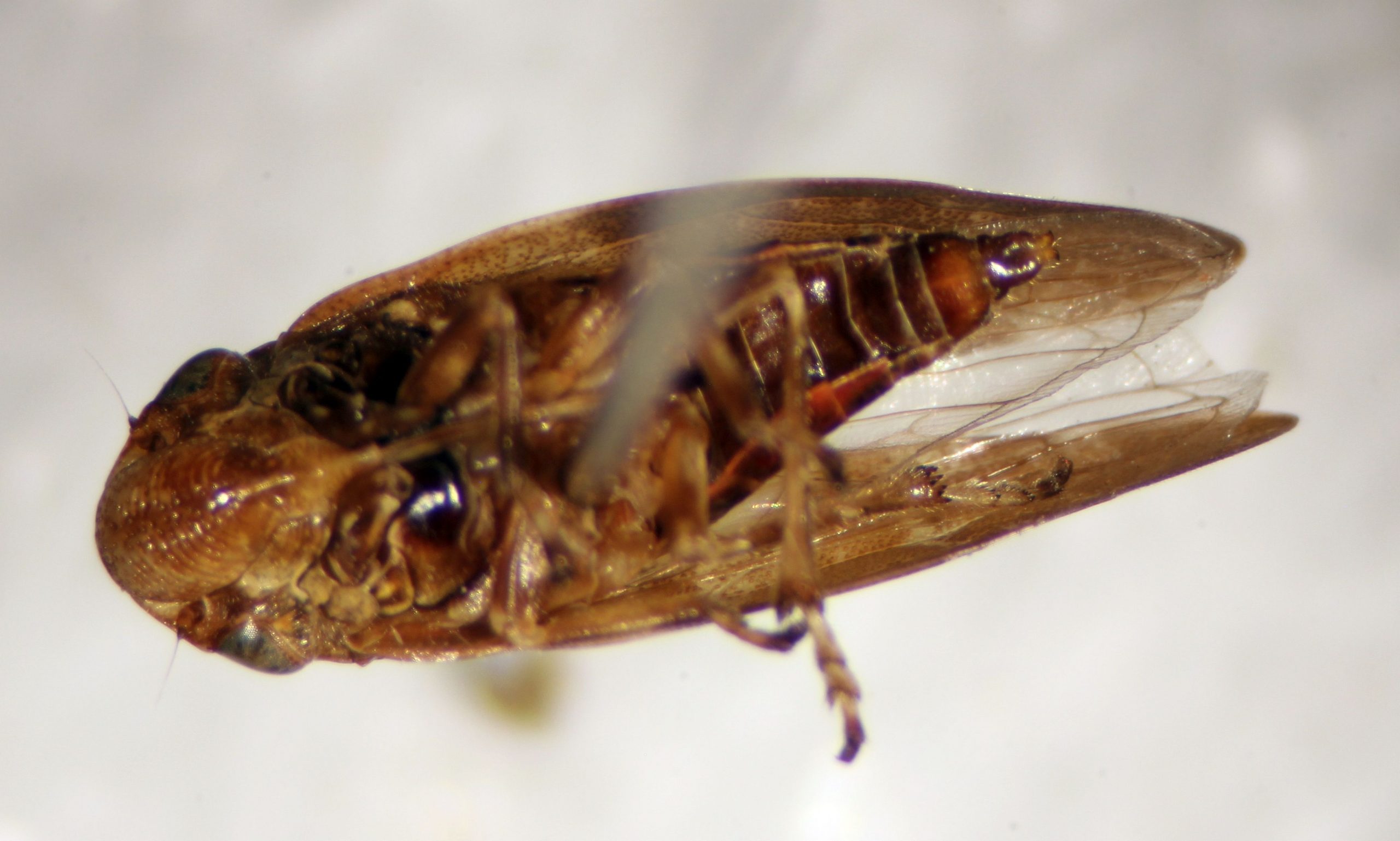
Cicadellidae
Cicadellidae also resemble miniature cicadas and, of course, Cercopidae. Their bodies tend to be slenderer and their antennae longer than Cercopidae. The hind tibiae have rows of bristles along them, in contrast to the stout bristles seen in Cercopidae. This family is also common in Prince George, and feeds on plant sap.

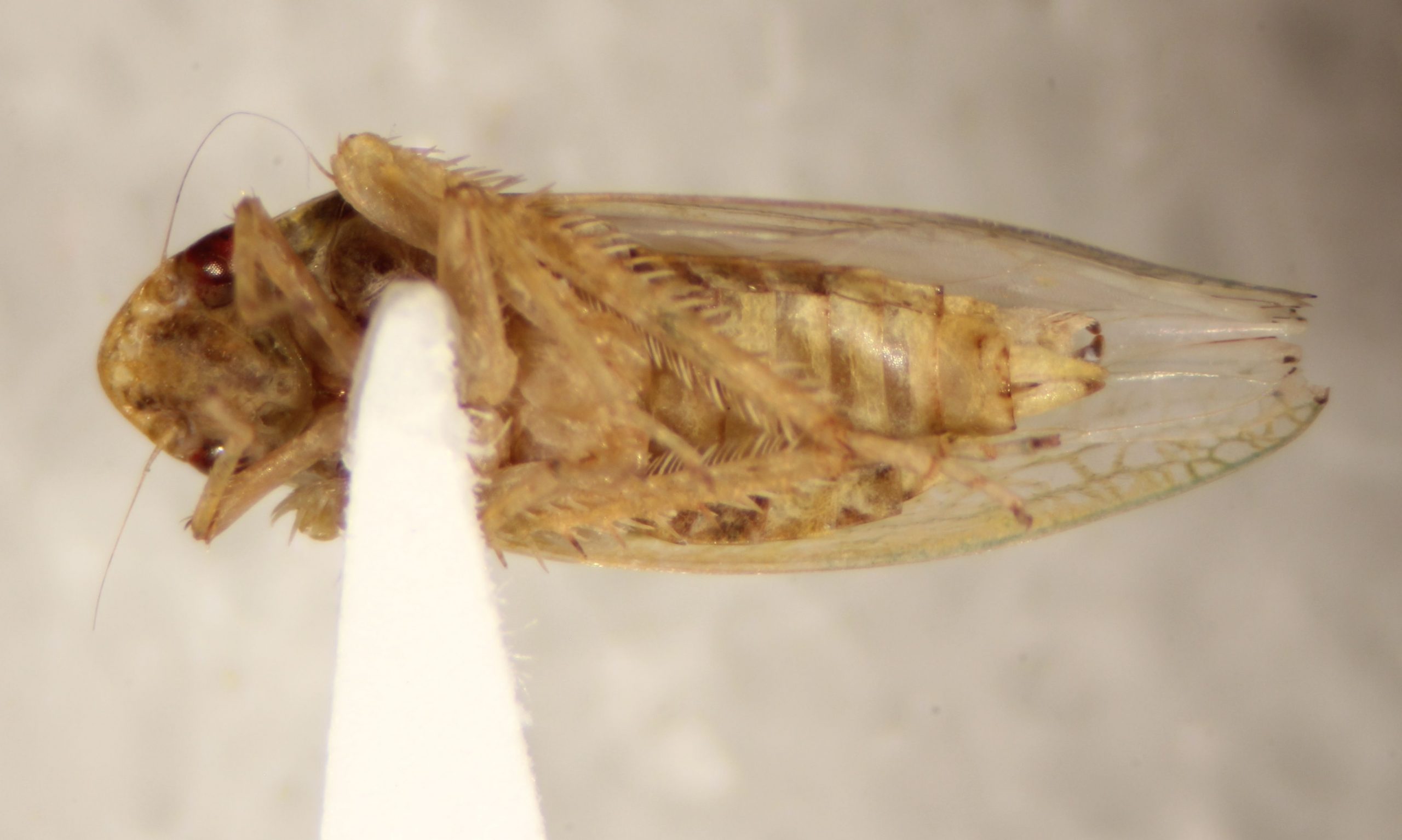
Fulgoridae
While we do not yet have any specimens of Fulgoridae at UNBC, it is a family that you should be aware of. They are important plant-feeders, especially in the tropics and subtropics. Recently, one species native to China, Bangladesh, and Vietnam, has been unintentionally introduced to Japan, Korea, and the USA. The spotted lanternfly, Lycorma delicatula, was detected in Pennsylvania in 2014. It is a large (~2.5 cm), brightly coloured insect that poses a threat to grapes, hops, fruit trees, and forest trees. The nymphs are also brightly coloured and gregarious.
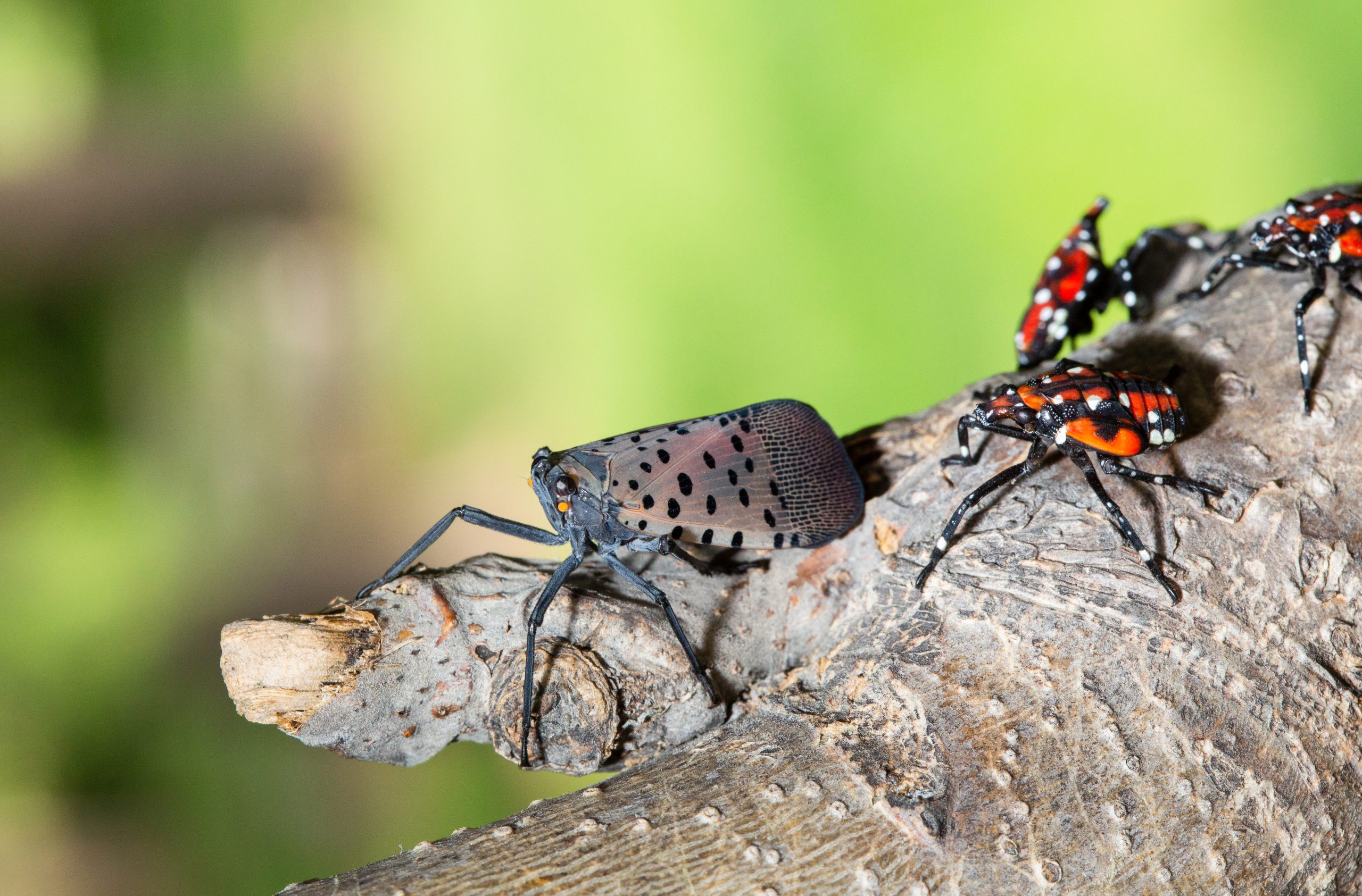
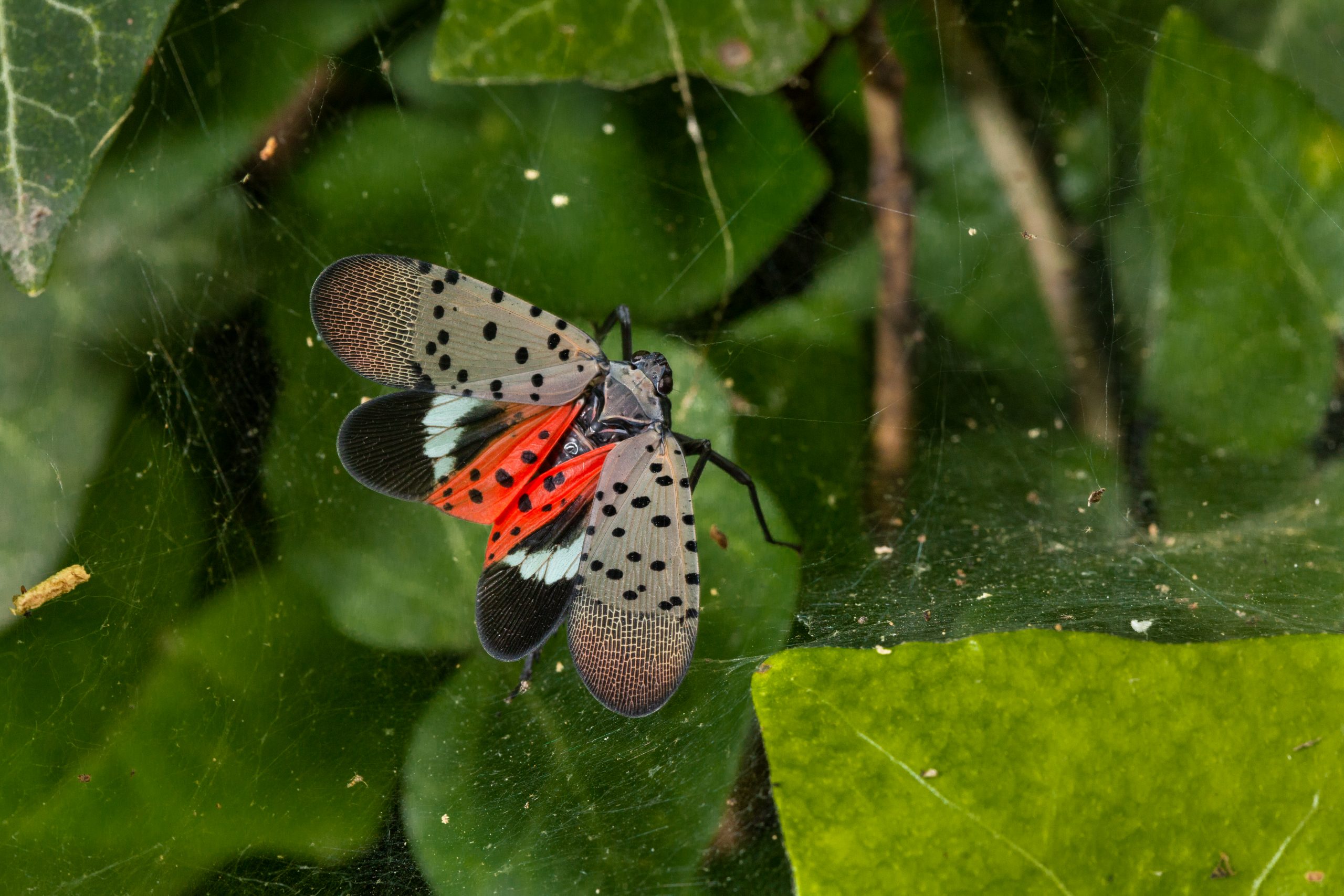


Feedback/Errata